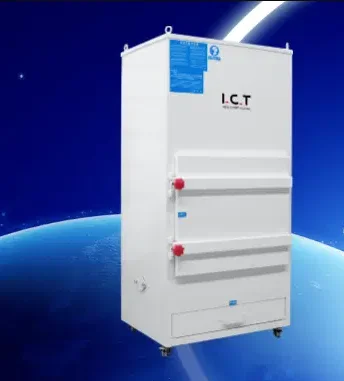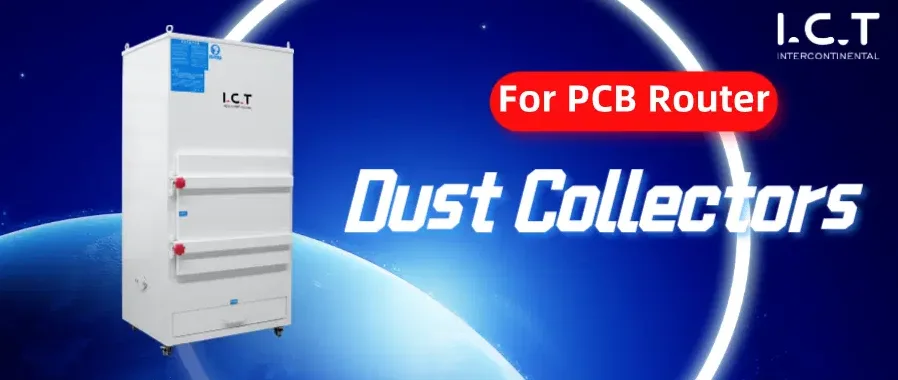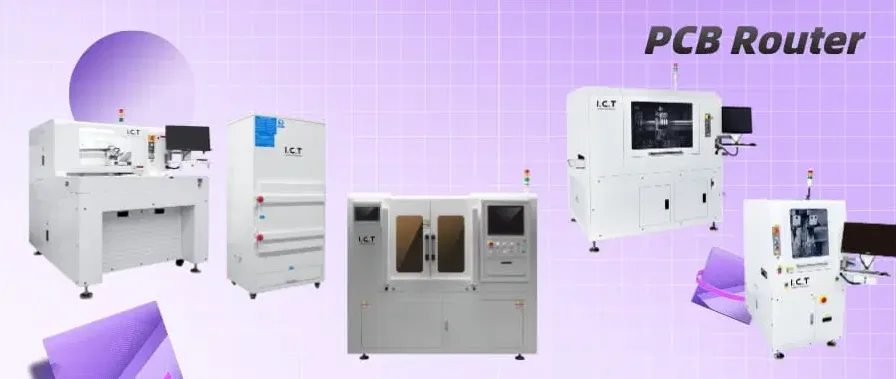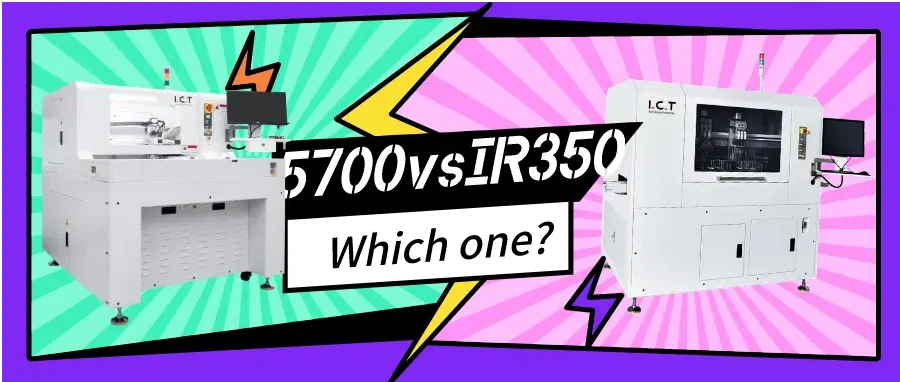
Understanding The Crucial Role Of Dust Collectors In PCB Depaneling Machines
Precision is paramount in PCB manufacturing, but it must go hand in hand with cleanliness. The intrusion of dust and debris can wreak havoc on delicate electronics. This article explores the pivotal role of dust collectors, their operation, and their necessity for various PCB depaneling machines.

The Dust Collector’s Crucial Function
Dust collectors, also known as dust extractors, play an indispensable role in PCB manufacturing. When a PCB depaneling machine or a Laser PCB Depaneling machine is in operation, it generates a significant amount of dust. The dust collector promptly engages its vacuum motor to suction fine particles off the PCB, directing them to a collector equipped with a filtration system.
Which Models Of PCB Depanelers Require Dust Collector?

Several PCB depaneling machines necessitate dust collectors to ensure precision and cleanliness, including:
I.C.T-5700
Offline Depaneling Machine, high precision, easy manual operation, dual platform, high efficiency.
I.C.T-IR350
In-line depaneling machine, high precision, rapid operation, suitable for integration into the SMT production line for Industry 4.0 and AI automated production.
I.C.T-LCO350
Laser cutting ensures cutting accuracy of 0.002, ideal for precise cutting requirements.
I.C.T-100A
Desktop PCB depaneling machine with compact size and high precision, suitable for smaller-scale operations.
The Science Behind PCB Dust Collectors
To prevent charged dust particles from adhering to PCBs, PCB depaneling machines are equipped with ionizing guns. These devices emit ions that neutralize static charges, making dust particles less likely to stick to freshly cut PCBs.
The Vacuum Effect: Suctioning Away Dust
During PCB depaneling, a cloud of dust is produced. The dust collector utilizes a robust suction system, often powered by vacuum motors, to draw dust away from the work area. Collected dust is transported to a designated collection point within the dust collector.
A Difference In Design: I.C.T-5700 Vs. I.C.T-IR350
The placement of the dust collection apparatus distinguishes PCB depaneling machines. I.C.T-5700 has a bottom-mounted system capturing falling dust, while I.C.T-IR350 features a top-mounted system preventing dust settling on the work surface.
This strategic difference ensures efficient removal of dust and debris, guaranteeing a clean and precise manufacturing process.
Check: If you want to learn about the comparison of I.C.T-5700 and I.C.T-IR350.

The Importance Of Filter Replacement
The efficiency of a dust collector relies on its filter, necessitating periodic replacement every 1-3 years, depending on usage frequency. Regular filter maintenance ensures optimal performance.
Dust Collectors: Keep Your PCB Manufacturing Clean And Precise
Precision in PCB manufacturing is not solely about cutting-edge machinery but also about cleanliness. If you seek a dust collector for your PCB depaneling machine, contact us today to explore your options. Ensure your operations maintain cleanliness, efficiency, and meet the high standards of modern PCB manufacturing. Don’t let dust compromise your precision – let’s keep it clean together!







